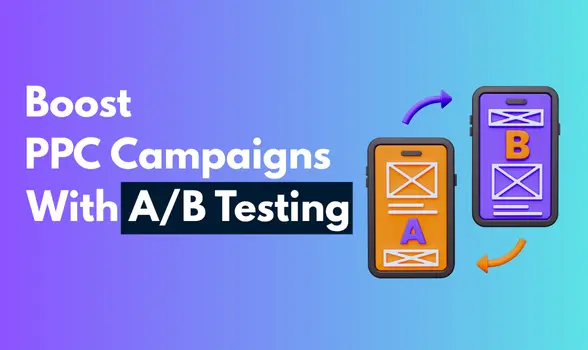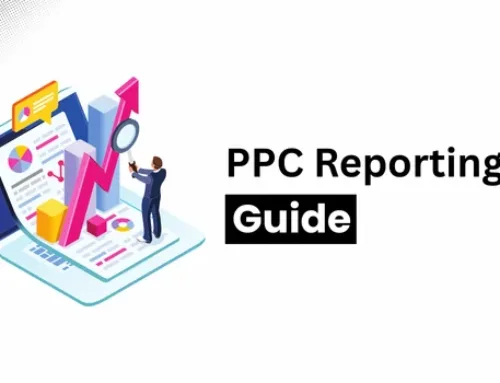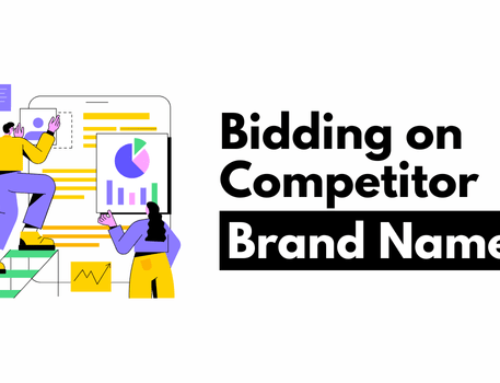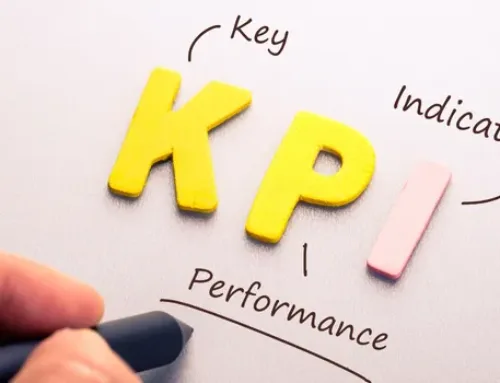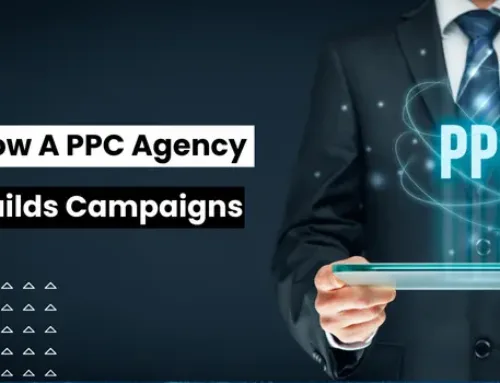Running PPC campaigns without testing is like steering a ship with your eyes closed. You might move forward, but you’ll have no idea if you’re headed in the right direction.
A/B Testing in PPC gives you the clarity to see which ads, messages, and landing pages truly connect with your audience, helping you spend smarter and convert more clicks into customers.
Understanding What Is A/B Testing
A/B Testing in PPC is a process where you compare two versions of an ad, landing page, or campaign element to see which performs better.
Think of it as a side-by-side race between two contenders, Ad A and Ad B, to see which one drives more clicks, conversions, or sales.
Why do we do it?
Because digital advertising isn’t about “gut feelings”, it’s about data. By testing different elements, you can fine-tune your PPC campaigns for better results and avoid wasting budget on underperforming ideas.
1. Establish a Baseline:
Before diving into changes, you need to measure where you are now. This means looking at metrics like:
- Click-through rate (CTR)
- Conversion rate
- Cost per click (CPC)
- Cost per conversion
If your ad currently has a CTR of 3% and a conversion rate of 6%, that’s your benchmark. The goal of your A/B Testing in PPC is to improve those numbers, and without a baseline, you can’t truly measure success.
For example: Imagine you run PPC campaigns for an online shoe store. Currently, 6 out of every 100 visitors make a purchase. After testing a new product image, you might discover it jumps to 8 sales out of 100 — a clear improvement.
2. Identify Your Goals
Jumping into A/B Testing in PPC without a goal is like starting a road trip without knowing your destination. You need to be specific about what you’re trying to improve.
Possible goals include:
- Increasing conversions (sales, signups, downloads)
- Reducing the cost per conversion
- Boosting CTR on your ads
- Improving engagement on landing pages
For example:
- For a SaaS company’s PPC campaigns, the goal could be to reduce the cost per free trial signup from $15 to $10.
- For a real estate agency, the goal might be to get more property inquiries from Google Ads without increasing spend.
3. Choose What to Test
The magic of A/B Testing in PPC lies in experimenting with individual elements while keeping everything else constant. Things you can test include:
- Headlines: Does “Book Your Dream Vacation” beat “Luxury Holidays at Affordable Prices”?
- Ad copy: Is a short, punchy description better than a detailed one?
- Call-to-action buttons: “Get Started” vs. “Claim Your Free Trial.”
- Visuals: People in the image vs. product only shots.
- Form fields: Asking for just an email vs. asking for full contact info.
For Example:
If you’re advertising an online fitness class, you could test “Burn Fat Fast in 30 Days” against “Get Fit Without the Gym” to see which drives more clicks and signups.
4. Create Variations
Every A/B test should have exactly two versions:
- Version A (Control): Your current ad, landing page, or setting.
- Version B (Variation): The new version with just one significant change.
For example: If you’re testing your ad’s main image, Version A might feature a single product shot, while Version B shows a smiling customer using the product. Everything else, including headline, copy, PPC Keyword Research, and targeting, stays identical.
5. Define Your Audience Segments
Different audience segments respond differently to messaging. Splitting your audience into groups allows you to see these differences.
For example: If you or a PPC Agency is running PPC campaigns for a travel company:
- Show one ad to people aged 18–30, highlighting adventure travel.
- Show another to people aged 50+, focusing on relaxation and luxury.
Do you know? Retargeting campaigns work brilliantly for A/B tests because you’re testing against an audience already familiar with your brand, which reduces variability and gives more precise results.
6. Set Up the Test
If you’re running your A/B Testing in PPC on Google Ads, you can use the built-in “Experiments” tool. For Meta (Facebook/Instagram) Ads, use the A/B Test feature in Ads Manager.
You simply:
- Select the element you want to test.
- Set equal budgets for both versions.
- Run the test long enough to gather meaningful data (usually 2–4 weeks, depending on traffic).
7. Monitor and Analyze Results
Tracking the right metrics will make or break your test. For A/B Testing in PPC, you should monitor:
- Conversion rate: Which version gets more people to take the desired action?
- Bounce rate: Are people leaving immediately after clicking?
- Cost per conversion: Which version is more budget-friendly?
- Engagement rate: Are users interacting more with one variation?
For example: If Version B increases conversion rates by 15% while lowering cost per conversion, it’s likely the winner.
8. Implement Insights
Once you’ve identified the winning variation, roll it out to your entire audience. Then, start planning your next test.
For example: If testing a new call-to-action button color increased sign-ups by 20%, update all relevant PPC campaigns and landing pages to use that color.
What Are the Benefits Of A/B Testing In PPC?
Running A/B Testing in PPC isn’t just about curiosity; it’s about unlocking real, measurable improvements that can transform the way your PPC campaigns perform. Here’s how A/B testing can make every marketing dollar work harder:
1. Solve Visitor Frustrations:
If your ad or landing page isn’t converting, visitors may feel confused, overwhelmed, or misled. A/B testing can reveal friction points and help you fix them quickly.
Why does it matter?
- Reduces drop-offs by matching ad messaging with landing page expectations.
- Helps simplify forms, navigation, or calls-to-action that may be too complicated.
For example: If people keep abandoning your checkout page, testing a simplified one-page checkout might solve the problem instantly.
2. Maximize Ad ROI:
When you know which version of an ad drives more conversions, you can shift more budget to that winner, instantly increasing your return on investment.
How does it help?
- Eliminates underperforming creatives that waste budget.
- Allows better allocation of ad spend towards proven winners.
- Improves cost efficiency without needing a bigger budget.
For example: If Ad B generates 30% more leads for the same spend, scaling it up directly boosts your campaign’s profitability.
3. Reduce Bounce Rates:
A high bounce rate often means your ad promised something your landing page didn’t deliver, or visitors couldn’t find what they were looking for fast enough.
How does A/B testing help?
- Test different landing page layouts for clarity and usability.
- Aligns headlines and imagery to ensure a seamless transition from ad to page.
For example: Testing a landing page with a clear “Get Started” button above the fold might keep more visitors engaged.
4. Test With Low Risk:
Instead of overhauling everything, A/B Testing in PPC lets you make small, measurable changes one step at a time, so there’s no massive gamble with your budget.
Benefits:
- Allows cautious testing for significant changes, such as pricing or product descriptions.
- Let’s you validate risky ideas before rolling them out widely.
For example: A/B testing two different discount offers (10% vs. free shipping) lets you see which converts better without committing to both long-term.
5. Track Measurable Gains:
One of the biggest strengths of A/B Testing in PPC is that the numbers speak for themselves; you’ll see precisely how much impact your change had through PPC reporting.
What can you measure?
- Conversion rate improvement.
- Cost per conversion reduction.
- Engagement metrics like click-throughs, time on page, and form completions.
For example: If changing your call-to-action increases sign-ups from 200 to 250 per month, that’s a clear, measurable gain.
6. Support Redesign Decisions
When redesigning an ad or landing page, it’s risky to rely purely on creative opinions. A/B testing gives you proof before making sweeping changes.
Advantages:
- Confirms which layouts, images, or messaging truly work.
- Avoids wasting money on a redesign that performs worse than before.
- Helps build a data-backed creative strategy.
For example: Before fully launching a new homepage, test it against the old one with a small portion of traffic to ensure it improves conversions.
7. Lower Cost Per Lead
The ultimate goal of many PPC campaigns is to get more leads for less money, and A/B testing is a direct path to that.
How does it work?
- Identifies the ad and landing page combinations that convert at the lowest cost.
- Removes underperforming elements that drive up your CPL (Cost Per Lead).
For example: if Ad Variation B reduces the cost per lead from $20 to $14, and you generate 500 leads per month, that’s $3,000 saved monthly without cutting volume.
Ending Note
A/B Testing in PPC isn’t just a marketing buzzword; it’s a proven, data-driven way to improve your PPC campaigns and make your ad spend work harder. By starting with a baseline, defining your goals, testing one change at a time, and analyzing the results, you can consistently optimize for better performance.
The best part? This process never really ends. Digital advertising is constantly evolving, and so should your campaigns.
